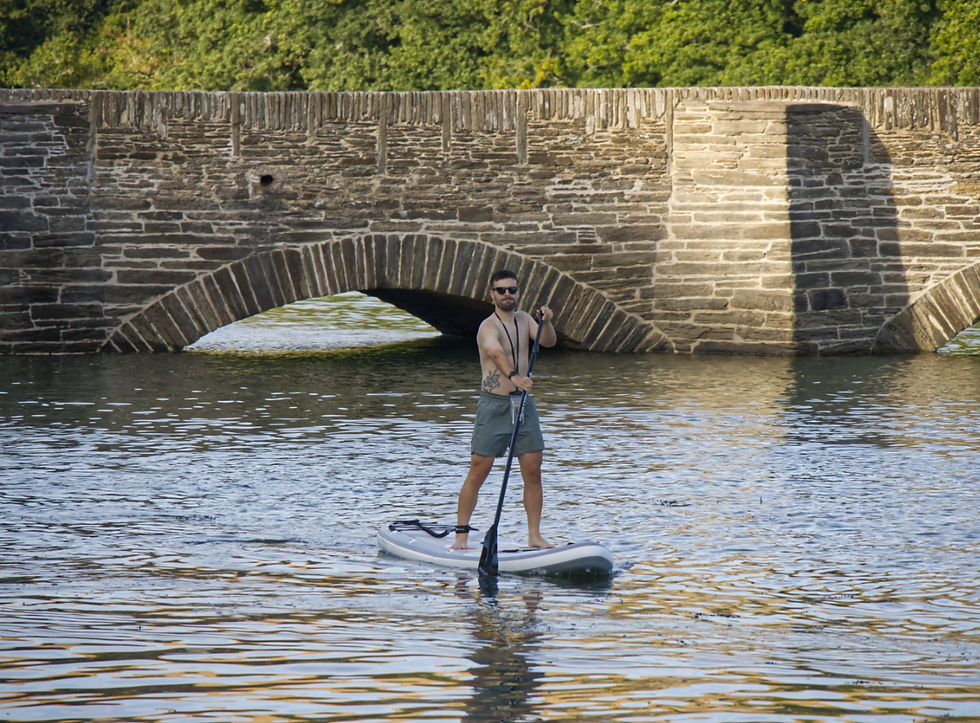Bowcombe Creek has to be one of the prettiest creeks in the South Hams and a popular spot for water sports. It is very unspoilt and undeveloped, offering easy access to the water at high tide.
It is part of what is commonly called the Kingsbridge Estuary, a large tidal Ria. In the summer, any sort of boating, paddle boarding, or swimming are the favourites.

The creek is divided by Bowcombe Bridge, also called the New Bridge because it replaced the packhorse bridge built in the 10th century, which is still in situ further up the creek near the mill. Originally with a swing bridge mechanism this was built in the 1820's when the first toll road joined Kingsbridge and Charleton. It no longer swings and so masted boats can no longer go up creek from this point, but it is no obstacle to paddle boarders of all ages, who just glide underneath, as long as the tide is not too high.

In 1826 a structural engineer known as James M Rendel built the drawbridge we now know as 'Bowcombe Bridge' (joining Alvington and Chillington) using 4 masonry arches and an opening span - it is understood this was the first time that hydraulic power was used. The opening span was eventually replaced with a fifth arch.


The original bridge divided the land between the Royal Estates of Alvington to the west and Chillington to the East; hence the name Kingsbridge. The first mention of the area is in the Domesday Book of 1086. After the Norman invasion in 1066 the lands were given to the Abbots of Buckfast who obtained a charter to hold markets in Kingsbridge as early as 1219. By 1250 it had its own chapel and mills, which had operated on Mill Street (Kingsbridge) for over 800 years until the last one closed in 1967. Wikipedia


The A379 road crosses the bridge here connecting Kingsbridge and Dartmouth along the most scenic coast road in Britain. Apart from short stretches of dual carriageway at either end and in Torquay, the A379 is a single carriageway road, and is often narrow and twisting.

One of the highlights for holiday makers at high tide is throwing themselves off the bridge, which is probably less dangerous than negotiating the traffic on the bridge itself.







A more sedate pastime for families is crabbing, using lines and bait to catch small shoreline crabs which are collected in buckets before being returned to the water.


Ohhh it works now. The last photo is one that needs to be framed!